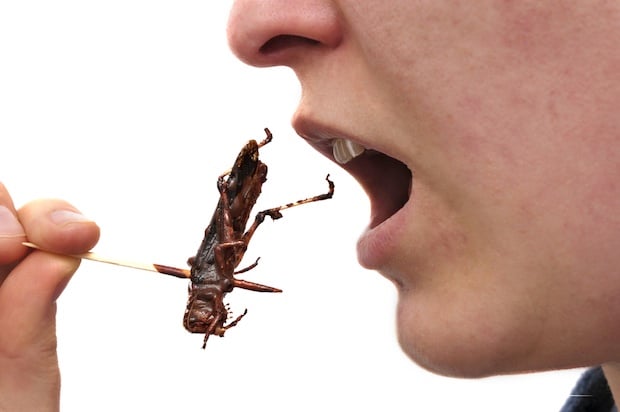We should welcome the 2013 cicada season with open, er, mouths. At least, that’s what the United Nations recommends in its report released today, which states that insects are a readily available, yet often ignored, source of nutritious and protein-rich food.
While the thought of eating a grasshopper or beetles may cue our gag reflex in the US, insects are part of the traditional diet of at least 2 billion people, according to the Food and Agriculture Organization of the UN. More than 1,900 types of insect in the world are edible. The following types of insects are the most consumed:
1) Beetles—31 percent
2) Caterpillars—18 percent, especially popular in sub-Saharan Africa
3) Bees, wasps, and ants—14 percent, often eaten in Latin America
4) Cicadas and planthoppers—10 percent
So why insects? They’re rich in protein, good fats, calcium, iron, and zinc. Beetles, for example, contain six milligrams of iron per 100 grams of dry weight. In addition, eating them is good for the environment, as preparing insects as food emits fewer greenhouse gases than livestock.
For those still squeamish, don’t worry. “We are not saying that people should be eating bugs,” said the report’s co-author Eva Muller. “We are saying that insects are just one resource provided by forests, and insects are pretty much untapped for their food potential.”
For the brave consumers, one restaurant in Washington can satisfy your craving for creepy crawlies: Oyamel’s Chapulines tacos contain sautéed grasshoppers. And fun fact: In the 1990s, now-defunct DC restaurant the Insect Club used to serve crickets and larvae of mealworms—the chef, Mark Nevin, went through 50,000 insects each day.



















